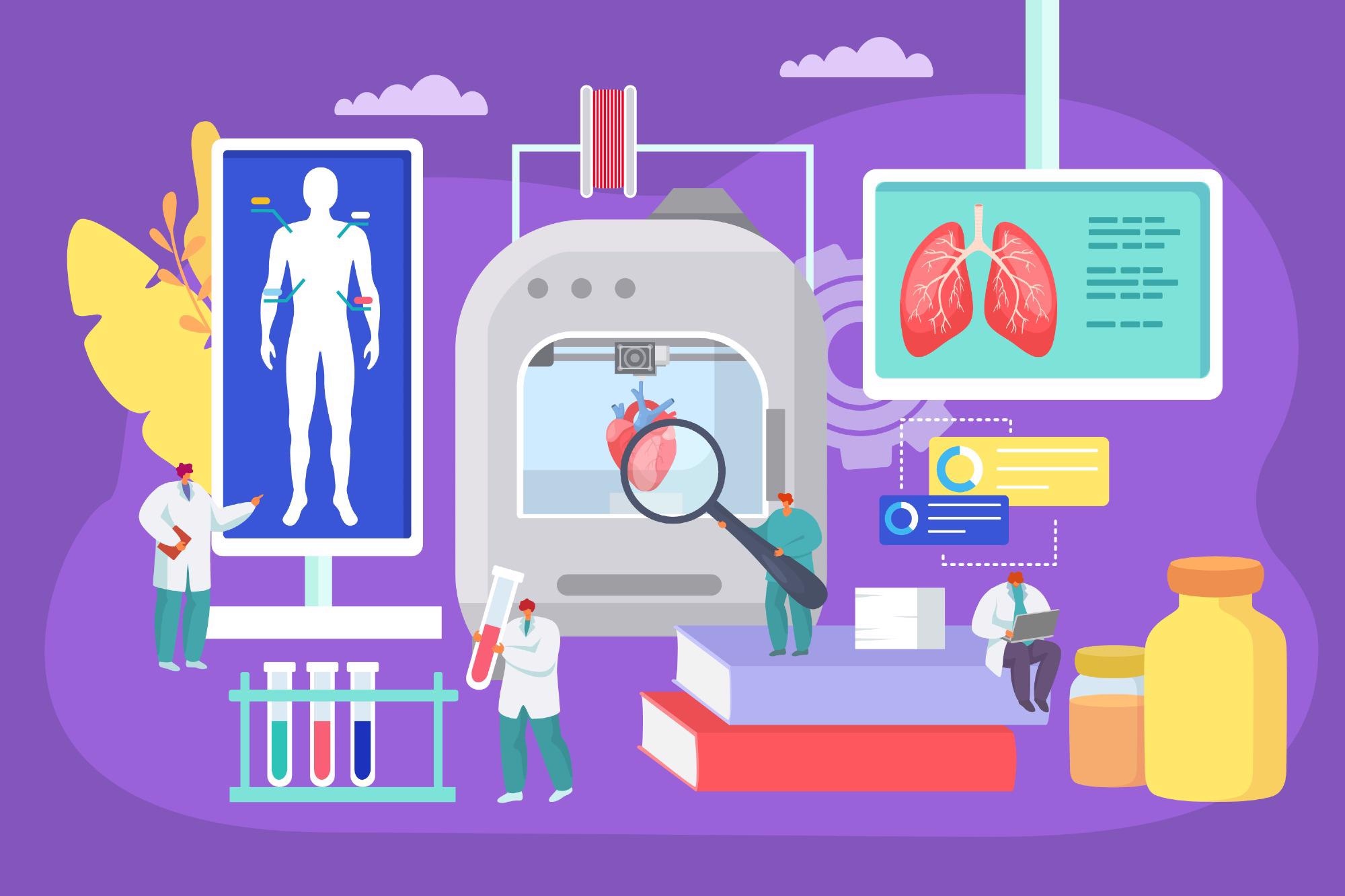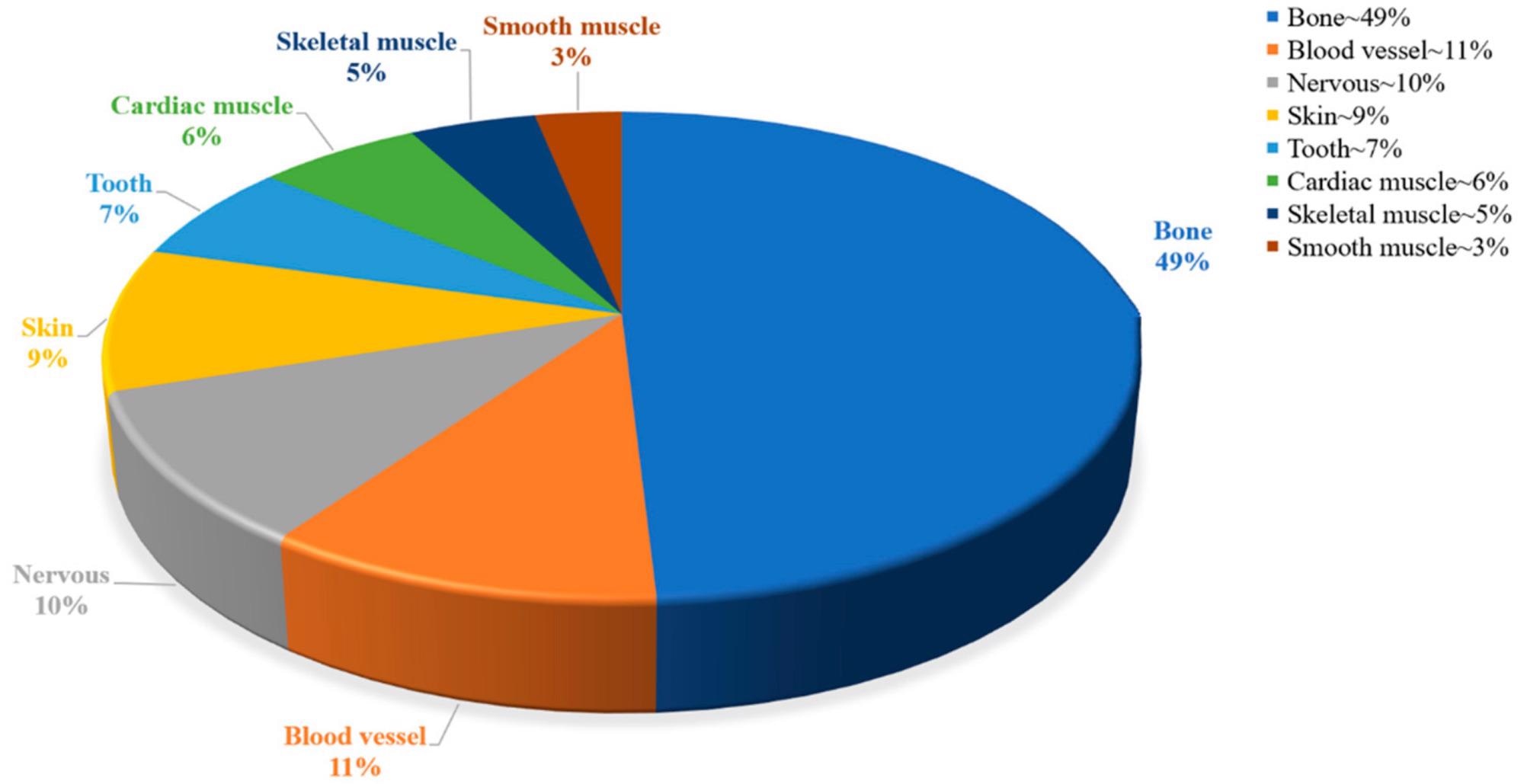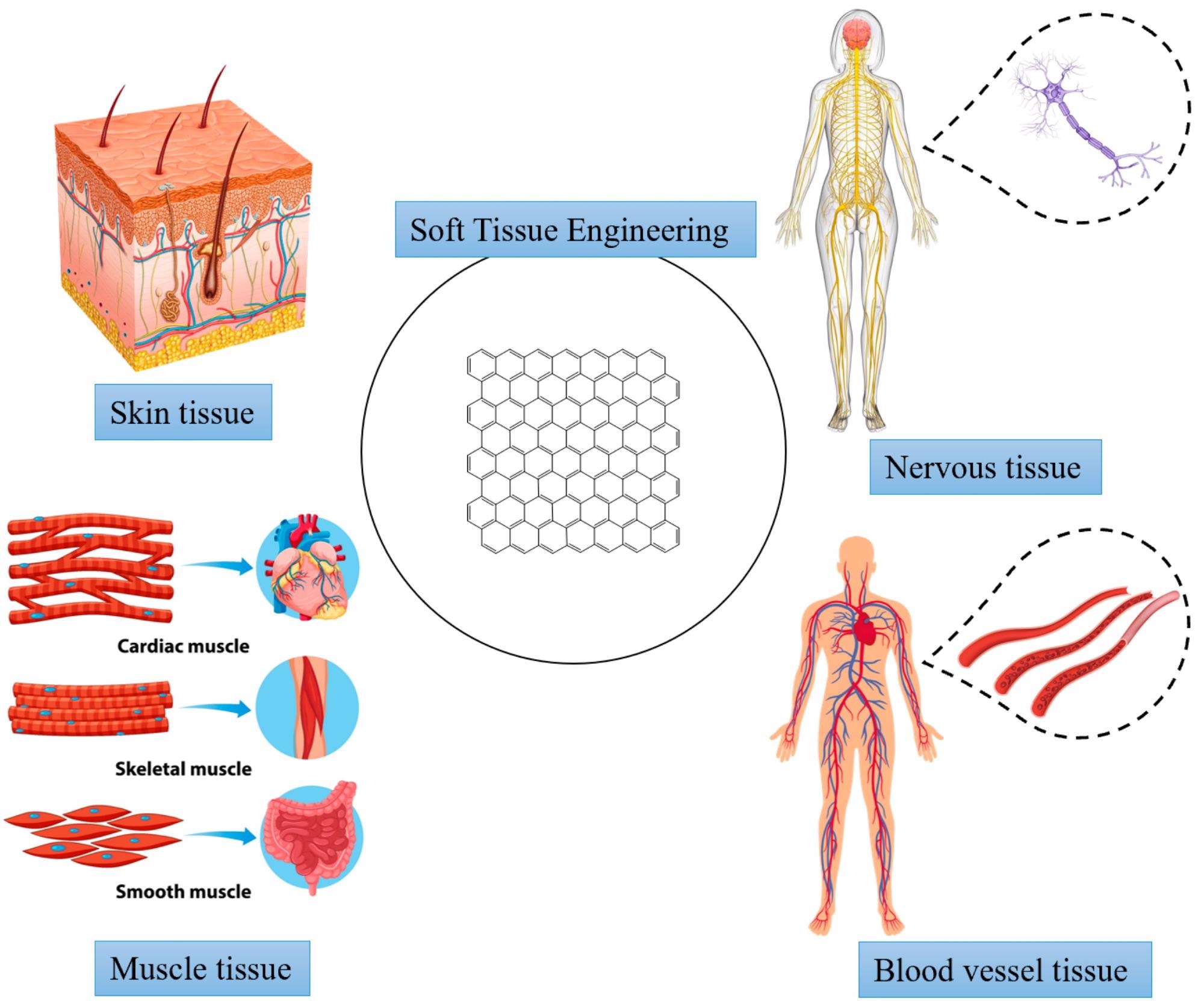In a review article published recently in the MDPI journal materials, the architecture and characteristics of common graphene-based nanomaterials (GBNs) were discussed, as well as the advances in the production of GBNs in engineering of soft tissues (including skin, blood vessel, muscular, and neural tissues).

Study: Progress in the Development of Graphene-Based Biomaterials for Tissue Engineering and Regeneration. Image Credit: KittyVector/Shutterstock.com
Tissue Engineering for the Regeneration of Damaged Soft Tissues
Soft tissues encompass a wide range of bodily components, including skin, blood vessels, muscular, and neural, all of which serve the purpose of enveloping, supporting, or linking bodily systems and organs.
Non-self healing behavior may arise following soft tissue damage owing to the presence of variables like illness, injury, and ageing. Currently, organ transplants are the primary method for addressing this damage, though the scarcity of organ donors and risk of rejection is of great concern.

Figure 1. Percentage of correlation based on different types of tissue engineering. © Chen, C., Xi, Y., and Weng, Y. (2022).
Tissue engineering has arisen as a significant new clinical method for addressing the present medical treatment challenges of healing and rebuilding compromised areas. Tissue design is described as the creation of a biologically functional tissue substitutes that mimic the targeted tissue's form and functionality. It may use a mix of cells, biomaterials, and suitable biochemical agents to repair, preserve, or enhance the functioning of tissues or a whole organ.
Graphene-based Nanomaterials for Tissue Engineering
Graphene's exceptional qualities make it extensively employed in power, environmental, healthcare, sensing, and other fields.
Due to their outstanding physical strength, electric conductance, and diverse 2D and 3D morphologies, graphene-based nanomaterials (GBNs) are becoming viable choices for tissue design systems such as the recovery of wounds, restorative medication, growth and differentiation of cells, and stem cell engineering.
They may be utilized as a reinforcing component in the construction of tissue development scaffoldings like hydrogel, fiber, sheets, and foam. Simultaneously, graphene's exceptional physical qualities may create active biological areas, which show enormous promise in the area of tissue development when it occurs in the shape of composites.
GBNs have thus far been widely studied in bone, cartilage, neural, cardiac, muscular, and skin/adipose tissue design. Even though there is emerging data that graphene-based materials offer vast biological implementation possibilities, their possible damage to people and the ecosystem must also be considered.

Figure 2. Applications in soft tissue engineering. © Chen, C., Xi, Y., and Weng, Y. (2022).
Encouraging Aspects of Using GBNs for Tissue Engineering
The architecture and characteristics of GBNs, as well as their cytocompatibility and physicochemical characteristics in soft tissue development, were studied and described in length in this work.
Owing to their high physical strength, rigidity, conductance, and variety of two-dimensional and three-dimensional structures, GBNs can induce stem cell growth and distinction into particular lineages such as skin, blood vessels, neural, muscular, and cardiac, making them viable options for the engineering of tissues.
GBNs have strong photothermal characteristics and antimicrobial function, which may be administered to the wounded area to avoid infections and prolong recovery.
As GBNs possess a large surface area that interacts with rich functional groups, they can increase cytocompatibility, decrease cytotoxicity, and have unique features such as specific targeting. Furthermore, based on its intrinsic pH sensitivity and the pH differential among healthy and malignant cells, pH-sensitive drug delivery treatment may be accomplished.
Challenges to Overcome
Despite notable successes, the research of GBNs in living organisms still faces considerable problems and limitations. First, graphene agglomeration in the mixture and unequal dispersion of graphene nanofilms in the framework has an impact on the operational use of materials, and novel ways to avoid graphene agglomeration need to be devised.
Second, the majority of the findings provide a contentious perspective of GBNs' antimicrobial function, and a thorough knowledge of the key processes and contributing elements of their antimicrobial property is an issue that merits additional investigation. Moreover, although the cytotoxicity of GBNs may be considerably decreased by chemical modification, possible long-term toxic effects still pose significant concerns to human health and the environment.
To examine the safeness and cytocompatibility of GBN materials, further in vivo toxicologies employing animal specimens are required. Furthermore, a significant quantity of experimental research is still required to address the issue of scalable manufacturing and medical use.
In conclusion, despite the many unresolved concerns and hurdles, the usage of GBNs may present a game-changing possibility for potential tissue engineering applications.
Reference
Chen, C., Xi, Y., and Weng, Y. (2022). Progress in the Development of Graphene-Based Biomaterials for Tissue Engineering and Regeneration. Materials, 15(6). Available at: https://www.mdpi.com/1996-1944/15/6/2164
Disclaimer: The views expressed here are those of the author expressed in their private capacity and do not necessarily represent the views of AZoM.com Limited T/A AZoNetwork the owner and operator of this website. This disclaimer forms part of the Terms and conditions of use of this website.